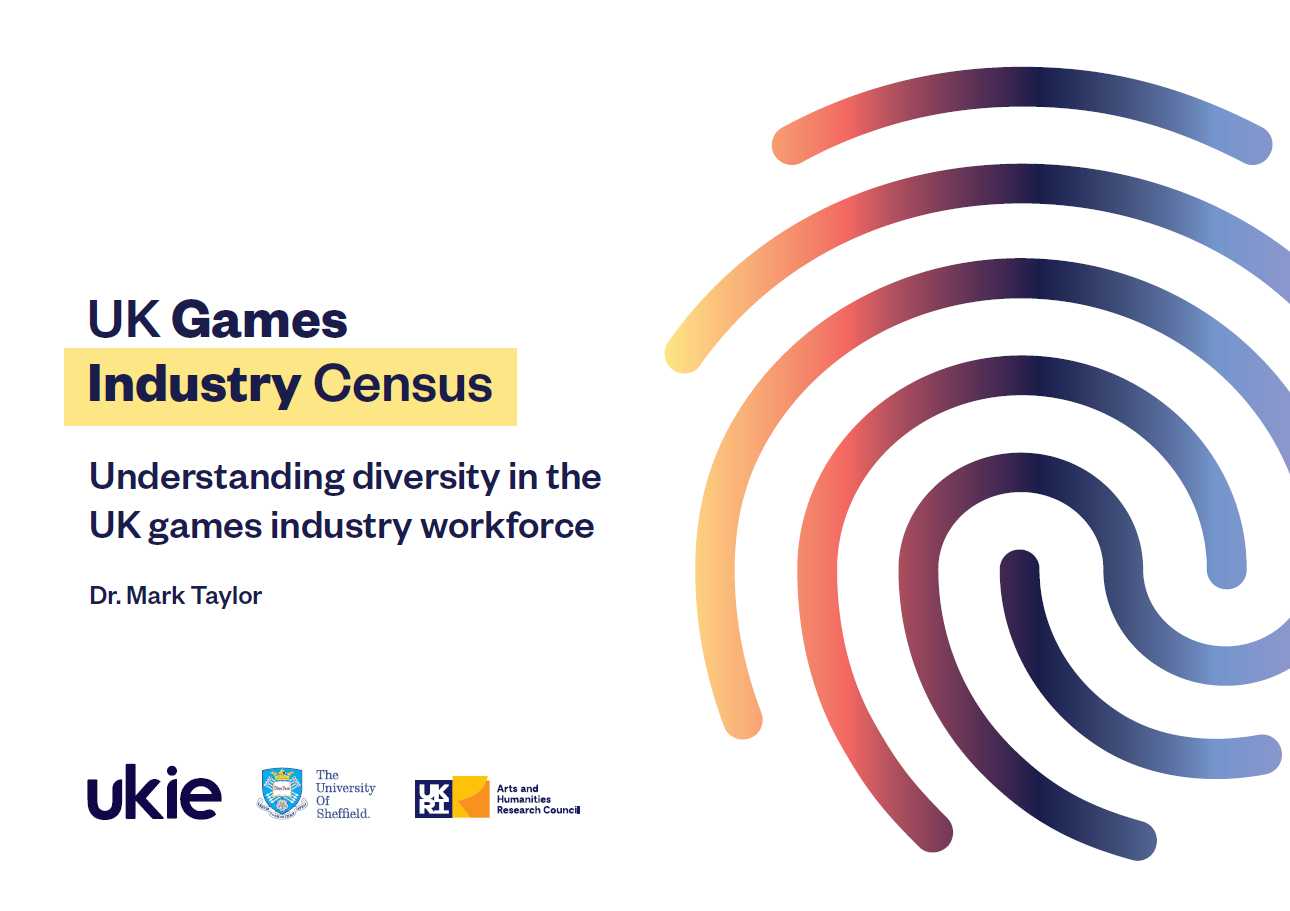
The latest games industry census launched in March 2022. Read the latest census report here.
The UK Games Industry Census is a first-of-its-kind report, delivering the most comprehensive and detailed assessment of diversity within the UK games industry workforce ever conducted.
Download the full report here
About this report
Written by Dr. Mark Taylor of the University of Sheffield and funded via the Arts & Humanities Research Council, this independent analysis focuses on three main areas: the kinds of work that games industry workers do, their personal characteristics, and their backgrounds. By asking questions that could be compared against those from other sectors, national datasets or by digging into how multiple characteristics fit together, we were able to gain a very clear view of both areas where games can celebrate and where clear challenges lie.
This census was completed by over 3,200 games workers, or around 20% of the overall workforce, between September and October 2019. By using both open and targeted recruitment methods, we were able to ensure a truly representative sample of people working across the sector.
Key findings
- The UK games industry workforce is highly international - 19% of workers are from the EU/EEA, and a further 9% from the rest of the world – with respondents listing 88 different countries as where they spent most of their time in childhood. International workers make up a third of core games production, art and programming roles and are more likely to work in senior, mid-level and junior roles in the industry, but feature less in managerial and directorial positions.
- The games sector is a young industry, with two thirds of people working in the sector aged 35 or under. But 54% of people in the industry have worked in the sector for five years or more.
- 10% of people working in games are Black, Asian or minority ethnic (BAME). This is a slightly higher percentage than in the national working population, and higher than both the overall creative industries and specific sectors such as music, publishing and film/TV. However, it is lower than the equivalent figure for IT and software, as well as below the average in the working-age population. While BAME workers can be found broadly equally in all job roles, with a small skew towards more non-sector specific roles, they are noticeably less represented in senior positions.
- 70% of people working in the games industry are male, compared to 28% female and 2% non-binary workers. Female representation in the workforce is significantly under the national average of those in work, as well as less than in cultural and creative roles more generally, but is similar to the proportion of women working in Film/TV, and above that of the general IT/software sector.
- Migration is a key factor of both ethnic and gender diversity; while 28% of the overall games workforce in general hold non-UK nationalities, this rises to 40% for BAME workers and 35% of female workers.
- 62% of the video games workforce come from households where the main earner worked in a managerial/professional role. This proportion is higher than every other creative sector aside from publishing and only lower than those found in roles such as doctors, lawyers and journalists. This ratio is still comparable to that of national broadcasters such as the BBC and Channel 4.
- 81% of the industry is educated to at least undergraduate level, rising to 88% for core games production roles in art or programming. This is considerably above the 57% average for the cultural and creative industries. 27% of workers hold a game-specific qualification, rising to over half of workers in games design and art roles. More commonly, workers have qualifications in STEM subjects at 31%, increasing to 60% for workers in programming roles.
- 12% of the industry workforce attended an independent or fee-paying school, which is nearly double the national average of 7%. This figure rises to 20% of the workforce amongst directors and CEOs.
- 21% of people working in games are LGBTQ+, while 79% are heterosexual. This is a significantly high proportion of LGBTQ+ workers, with other data sources indicating that heterosexual people make up between 93-97% of the national population. At 2%, non-binary representation in the UK games industry workforce is higher than the national average, which is estimated at 0.4%. Trans people make up 3% of the games industry workforce, which again is above the estimated 1% within the national population.
- 21% of people working in the games industry live with a chronic physical health condition. This is higher than the overall working-age population, where 13% report long term physical issues.
- 31% of respondents reported that they live with anxiety, depression or both, considerably above the national average of 17%. Individuals working in junior or mid-level roles were more likely to report that they had anxiety and/or depression, with higher levels of depression also reported among Directors/CEOs of smaller companies.
- 3.5% of respondents reported that they worked 51 hours per week or more. Three quarters of all respondents reported working a standard full-time working week of between 33-40 hours.
In summary
These findings, as well as the further detail found throughout this report, reveals the complex and unique make-up of the UK games workforce. While there are many positive stories within the data, it is clear there are some key challenges that the industry must also understand and address.
Going forward, the sector will need to build both short and long-term strategies that continue to help support and retain existing talent, as well as encourage engagement and recruitment among those who are less well represented.
Download the full report here
